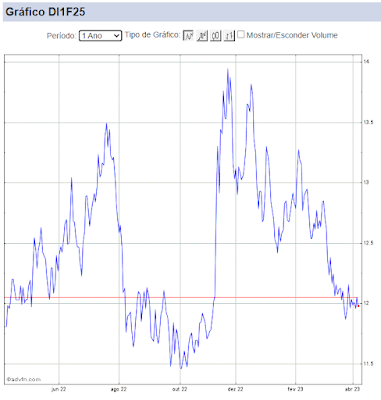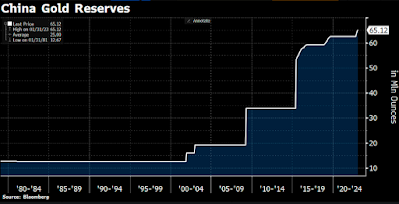Dollar Weakness!
O destaque desta manhã está por conta do movimento de enfraquecimento do USD no mundo. As bolsas globais apresentam alguma acomodação (mas nenhuma realização de lucros mais intensa). O petróleo voltou a cair, mas estabilizou-se temporariamente em torno de $42-$43. As taxas de juros globais operam estáveis, enquanto os ativos emergentes continuam a se favorecer do movimento de busca por yields.
Na agenda do dia, teremos o IPCA no Brasil, em que nossa área econômica espera um número em torno de 0,40% MoM. Nos EUA, as atenções estarão voltadas para o JOLTs, mais um importante indicador do mercado de trabalho.
No campo político local, o processo de impeachment está avançando no congresso, e os ativos locais parecem ter retomado uma tendência positiva, após uma breve acomodação.
Como comentei ontem: O cenário base continua a ser de baixo crescimento, com flutuações em torno da tendência, mas sem riscos aparentes de uma recessão global. Este ambiente tem sido visto pelo mercado como positivo para ativos que apresentem yield/carry elevados, e/ou fundamentos que justifiquem este tipo de alocação. Contudo, não concordo que os riscos ao cenário sejam nulos, ou devem ser totalmente ignorados, como o mercado parece precificar neste momento. Os dados de produtividade da economia americana divulgados ontem mostram os enormes desafios que o setor corporativo está tendo que superar. A economia cresce pouco, o mercado de trabalho está aquecido, e as pressões salariais, mesmo que ainda incipientes, mostraram trajetória gradual de elevação. Além disso, os sinais provenientes da China ainda são ambíguos, com um crescimento que não dá sinais claros de recuperação ou estabilização. Em suma, o cenário central descrito no quarto parágrafo ainda deve ser o favorito no curto-prazo. Nos atuais níveis de preço, começam a surgir hedges interessantes para os portfólios.
Em relação ao USD, gostaria de reproduzir a seguir a visão do time de FX do Morgan Stanley, que vem acertando na mosca o movimento recente no mercado de moedas:
Weak US productivity… Yesterday's release of the third consecutive decline in quarterly US productivity – the worst run since at least 1980 – does not bode well for the prospects for USD. 2Q productivity declined by 0.5%, coming in way below consensus expectations of +0.4%, suggesting that the growth potential of the US economy may have declined substantially. Importantly, unit labour costs (ULC) rose by only 2% while 1Q ULC was revised from a 4.5% gain to a 0.2% decline. Productivity growth determines the real wage and corporate profitability growth outlook. Real wages have been stagnant for many years, while the post-Lehman US corporate profitability advance peaked in 2014 and is now in decline. Most of the post-Lehman profitability advance had been supported by cost-cutting and replacing equity with debt, with the result of US corporates now running debt/asset ratios near historical peaks.
...a dovish Fed… The previous Fed President Bernanke has put low productivity gains into the context of undershooting inflation rates, supporting our view that the Fed will allow inflation expectations to lead to a potential rebound of nominal yields. In other words, the Fed will try to keep real yields at subdued levels and not allow a pre-emptive rise in nominal yields, leading to unwanted high real yields. The Fed should operate deliberately behind the curve, and yesterday’s poor productivity reading supports this view.
…and excessive USD… While the Fed no longer adds to its balance sheet, there seems to be an excess of USD in the system. Asia’s FX reserves ex China have reached a record high. Meanwhile, the BoJ, ECB, SNB and BoE have filled the gap left by the Fed, pumping liquidity into the system. This additional liquidity either finds its way into economic investment and is absorbed by economic expansion, or leads to financial investments, or in the worst case scenario results in a decline in monetary velocity, leading to a liquidity trap. The release of the dismal US productivity report not only signifies the poor US growth outlook but also the weak growth potential of DM in aggregate. Most DM economies are challenged by a mix of weak productivity growth rates, subsequently low investment returns and slow economic growth.
…lead the EM rally: DM central banks pump liquidity into the system for good reason. Their overleveraged and overcapacity-running economies have failed to stabilise their inflation outlook. Instead, inflation expectations keep falling. By adding liquidity into the system, central banks try to ease balance sheet pressures. Economies sacrificing consumption and favouring savings are deflationary. Central bank liquidity adds may slow the consumption cutback, but as long as investment returns remain poor, this additional central bank liquidity should not find its way into local (real sector) investment. With about US$11.5 trillion of DM bonds providing negative yield, the excess DM savings will be looking for yield. This is why the EM rally is primarily a flow of funds story and not a story built on solid EM fundamentals.


Comentários
Postar um comentário